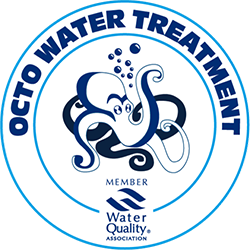Introduction to Fresh Water Safety Plans
Water is a critical resource in the yachting experience which is tightly regulated by the MLC, including supply, disinfection, storage arrangements, distribution systems and maintenance. It is aimed at ensuring high-quality drinking water onboard ships to protect crew, guests and owners from waterborne health risks.
The most effective means of consistently safeguarding the potable water supply is through the use of a comprehensive risk assessment and risk management approach, known as a Fresh Water Safety Plan (FWSP). In this article, we will cover the importance of a Fresh Water Safety Plan, and how you can implement it onboard your yacht.

The Critical Role of Fresh Water Safety Plans
Implementing a Fresh Water Safety Plan is vital to prevent the spread of waterborne diseases such as Legionella or E. coli, and protect the health of everyone onboard. A well-crafted plan ensures the taste, quality, and safety of water through structured sanitation and maintenance. It addresses potential hazards, from intake to consumption, outlining steps to mitigate risks and maintain system integrity.
Protecting Health and Wellbeing Onboard
Legionella infections cause the highest health burden of all waterborne pathogens in the EU. In 2023, Hydrus Laboratory, which work closely with Octo Marine, processed 1681 legionella samples. 31% of the samples came back positive for legionella, and of this percentage 48% of samples showed levels of legionella above the legal limit of 1000 cfu/l.
In some instances, this problematic result had serious impacts, not only with the potential health hazards for those onboard, but also delaying the sale of vessels and cancelling charters, the vessel being unfit to receive guests onboard or scaring potential buyers.
This can easily be avoided with a carefully managed Fresh Water Safety Plan.

Key Elements of a Robust Plan Include:
The WHO Guide to Ship Sanitation advises that there are 3 key components to a Fresh Water Safety Plan:
1. System Assessments – This includes a comprehensive overview from the point of bunkering up to the point of consumption, detailing all components and processes involved.
2. Operational Monitoring – Focuses on the regular monitoring and maintenance of identified control points within the water system to ensure safety and quality, including the measures applied on board the vessel.
3. Management and Communication – Encompasses strategies for managing the human and procedural aspects of the FWSP, ensuring all crew are informed and trained. Includes verification processes to continually assess the effectiveness of the FWSP
Build Your Fresh Water Safety Plan
To establish the WSP, a water technician and the engineer onboard will work together to establish what equipment is onboard, like water makers, softeners, sterilisation systems, filtration systems.
They will then assess the equipment condition, ensure there is no potential redundant pipework or deadlegs, and prepare a detailed plan of maintenance and accountability for the crew to follow. This will also identify critical equipment that should be repaired or installed, with emphasis on sterilisation equipment.

Monitoring Your Fresh Water Safety Plan
Prevent Potential Water Issues
Bacterial water analysis should be carried out on a regular basis to establish any potential bacterial infections allowing them to be treated before they become established within the freshwater system.
Updating the Plan & Continuous Improvement
A Fresh Water Safety Plan is not a one-time effort. It needs regular review and updates to adapt to changes in the water system, usage patterns, or regulations. A minimum of 2 analysis per year is required for the ship’s sanitation certificate, however 4 analysis per year does provide a clearer overview of any potential problems and allows for remediable action to be taken, reducing the risk of biofilm buildup. We can assist with Water Testing and Analysis services.

Embracing Water Safety as a Standard
At Octo Marine, our Fresh Water Safety Plan is designed to enable yachts to conform with MLC2006, WHO, IWA, IHR, ILO, IMO, USEPA, European Council Directive 98/83/EC and MCA guidelines and regulations. It is accredited to ISO 9001 and 14001 standards, showing that we prioritise professional integrity, client confidentiality and customer satisfaction.
Use and drink your water in confidence, compliance, and comfort with Octo Marine’s industry leading Fresh Water Safety Plan. Get in touch today to find out more.



